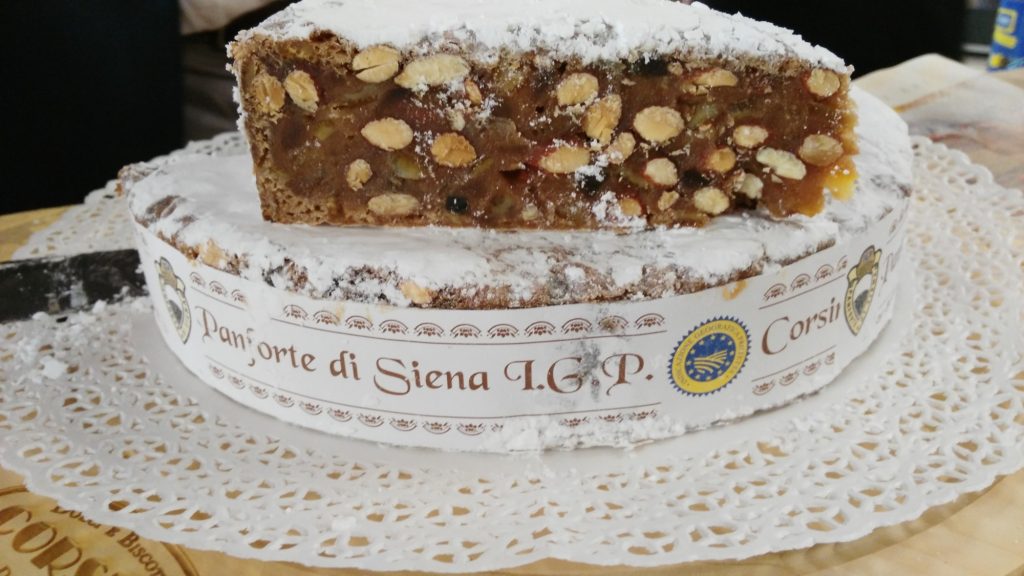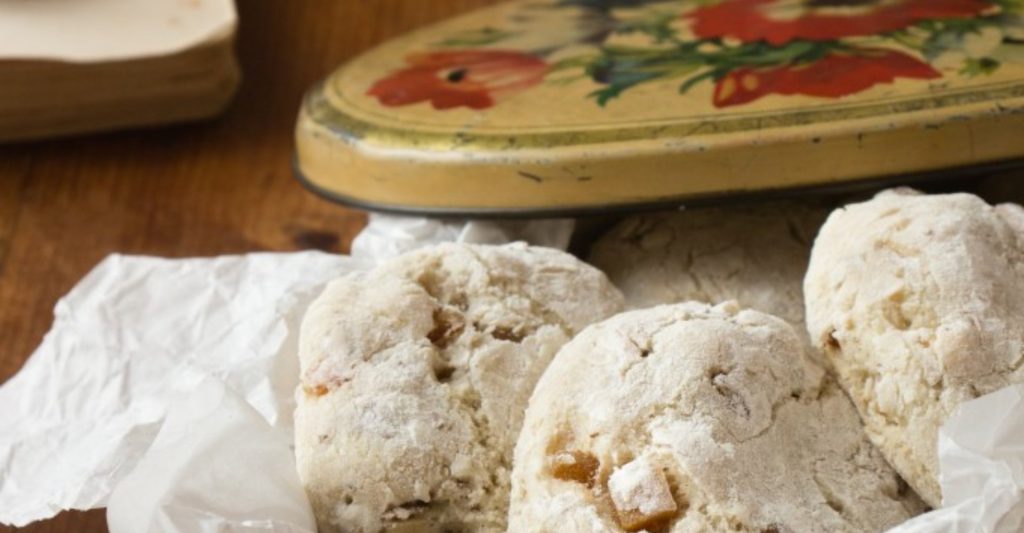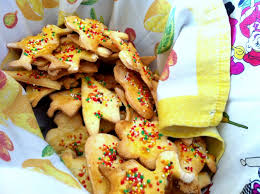Christmas sweets in Tuscany
6 min · 3 Dec 2024

At Christmas, as we know, traditional sweets cannot be missing. And in Tuscany, in addition to the classic panettone and pandoro, there are countless proposals for Christmas sweets, often linked to the rural world, ancient customs and simple but high-quality ingredients.
Here are some of the most characteristic sweets of the Christmas period in Tuscany.
Ricciarelli
Ricciarelli are the quintessential Tuscan Christmas cake and are never missing from the table during the festive season. Typical of Siena, they are soft, diamond-shaped sweets made from a baked dough of almonds, sugar and egg white. This is why they are also appreciated by those who are intolerant to gluten. Legend has it that they were brought to Tuscany by the knight Ricciardetto Della Gherardesca on his return from the Crusades. They were once known as ‘marzapanetti alla senese’ or ‘morzelletti’ and it was only in the 19th century that the name ‘ricciarelli’ appeared. They go well with tea, coffee or liqueur and passito wines.
Panforte
Also from Siena comes panforte, a sort of compact ‘cake’ obtained by processing and then baking a mixture of dried fruit, candied fruit, honey and spices. It can be presented in the white version (covered with icing sugar) or in the black version (covered with spices). This speciality has an ancient history. The earliest records date back to the early Middle Ages, when it was prepared by apothecaries, the ‘old’ pharmacists, only for the nobility and the clergy, because it contained, in addition to orange, citron and melon peels, almonds and spices that were very expensive for those times. The recipe did not undergo substantial changes until 1879, when Queen Margherita visited Siena and in her honour it was prepared without the melon rinds and with a vanilla sugar coating instead of black pepper.
Cavallucci
Let’s stay in Siena with the cavallucci, coarse, irregularly shaped and rather large biscuits made from a combination of tasty candied fruit, nuts, honey and fine spices. Their appearance is coy, but at the first bite you can feel the warmth of the spices and the richness of the walnuts and candied fruit that make you forget the less than festive appearance. Their recipe has been handed down for centuries: they were already popular at the time of Lorenzo the Magnificent (1449-1492). They are so called because, thanks to their ability to keep soft, they were the favourite meal of the men changing horses at the post stations. They are perfect accompanied by a small glass of vin santo or other sweet wines.
Copate
Copate are one of the lesser-known but tastier of the Sienese sweets traditionally associated with Christmas festivities. Two round wafers enclose a mixture of chopped almonds, egg whites, honey and obviously sugar, similar therefore to that of nougat. Their origin is traced back to the 14th century and attributed to the skilled hands of the nuns of Montecelso. With regard to the name, the term ‘copata’ is said to derive from the Latin ‘copatus’ meaning ‘coupled’, but in the book ‘Dolcezze di Toscana’ by Giovanni Righi Parenti, the author argues that the etymology comes from the Arabic ‘qubbaita’, i.e. ‘sweet almond’, which would lead back to a much older origin.
Santa Croce amaretti biscuits
Typical of Christmas tables and beyond, Santa Croce amaretti are dry, cone-shaped biscuits on a square base made with almond flour, sugar and eggs, to which grated lemon rind is added as a flavouring. It was the nuns of the Monastery of Santa Cristiana in Santa Croce sull’Arno (a municipality in the province of Pisa), in the early 19th century, who invented them. They gave them as gifts to the benefactors of the monastery, i.e. the most prominent families of the town. The recipe then went beyond the silent walls of the religious institute, and soon bakers and housewives began to make them themselves. Every 8 December, on the anniversary of the Marian apparition that occurred to Santa Cristiana in 1278, the Santa Croce sull’Arno amaretto festival is organised.
Ricciolina
In the Monte Amiata area (and particularly in the municipality of Abbadia San Salvatore), the typical Christmas cake is the cake ricciolina. A short pastry casket encloses chocolate cream and dried fruit (almonds but also walnuts, hazelnuts or pine nuts). The whole thing is topped with soft meringue variegated with chocolate. According to a popular tradition in the town of origin, Abbadia San Salvatore, it was invented at the beginning of the 20th century by a local confectioner, Mrs Beppa, who decided to revisit the recipe of the same name by Pellegrino Artusi. Ricciolina pairs beautifully with the most typical of Tuscan dessert wines, vin santo.
Befanini
We conclude this roundup of Tuscan Christmas sweets with befanini, colourful shortbread biscuits typical of Lucca and Versilia that are prepared during the Christmas season and, as the name suggests, especially around Epiphany. It is a poor but very tasty recipe. Easy to make, they are cut in the shape of a befana, hearts, stars or animals. They can be decorated as desired with coloured sugar balls and also used to decorate the Christmas tree.
Photo gallery © Visit Tuscany








